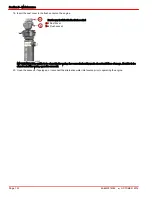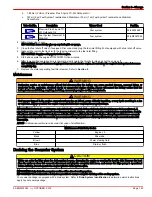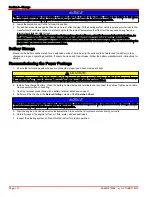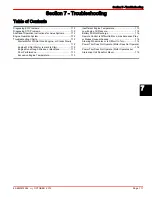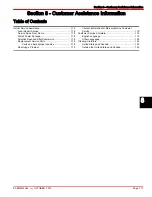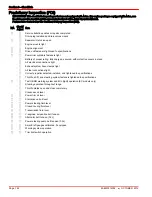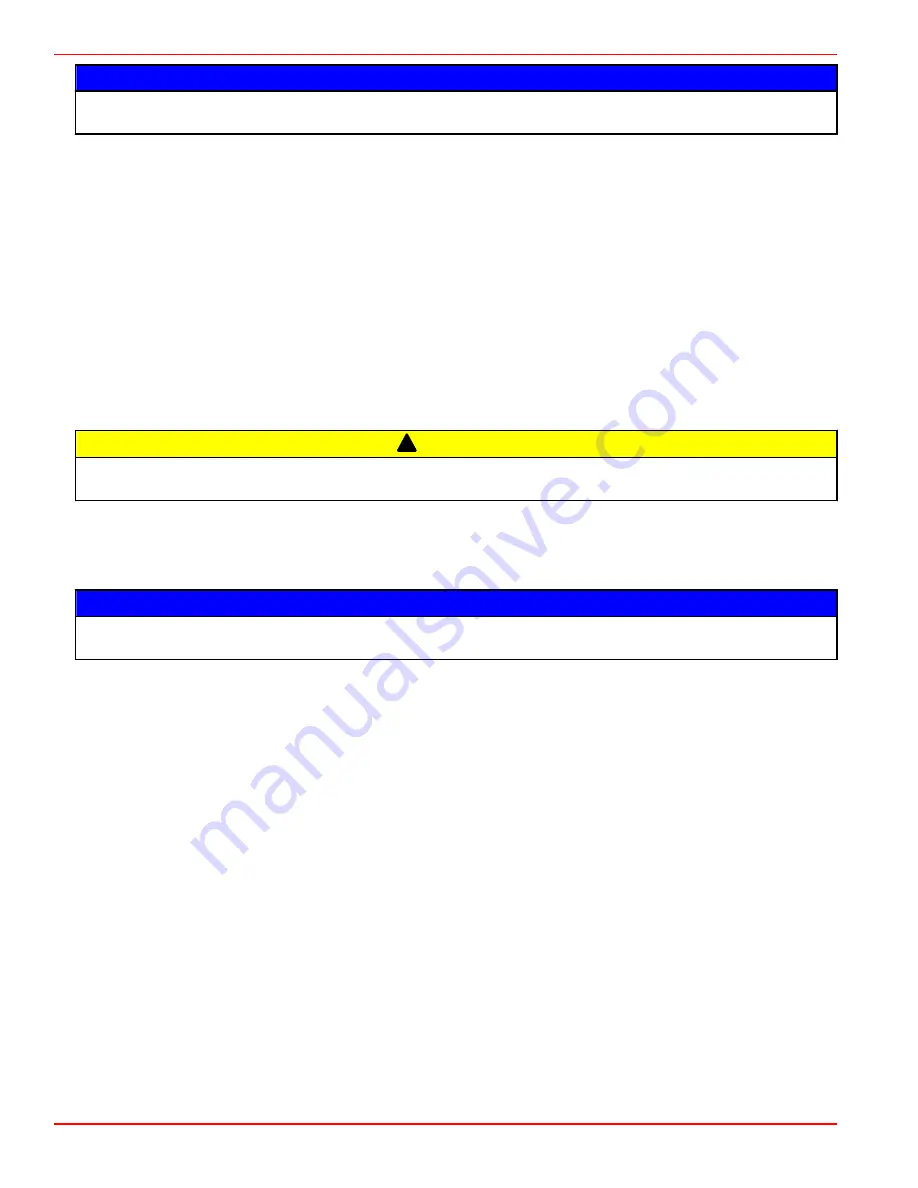
Section 6 - Storage
Page 110
90-8M0074352
eng
OCTOBER 2012
NOTICE
The universal joint bellows may develop a set when stored in a raised or up position, causing the bellows to fail when
returned to service and allowing water to enter the boat. Store the sterndrive in the full down position.
2. Lower the sterndrive unit to the full down/in position.
3. For additional assurance against freezing and rust, after draining, fill the cooling system with propylene glycol mixed to the
manufacturer's recommendation to protect engine to the lowest temperature to which it will be exposed during freezing
temperatures or extended storage.
IMPORTANT: Mercury MerCruiser requires that propylene glycol antifreeze, mixed to the manufacturer's instructions, be
used in the seawater section of the cooling system for freezing temperatures or extended storage. Ensure that the
propylene glycol antifreeze contains a rust inhibitor and is recommended for use in marine engines. Be certain to follow the
propylene glycol manufacturer's recommendations.
Battery Storage
Whenever the battery will be stored for an extended period of time, be sure the cells are full of water and the battery is fully
charged and in good operating condition. It should be clean and free of leaks. Follow the battery manufacturer's instructions for
storage.
Recommissioning the Power Package
1. Ensure that all cooling system hoses are connected properly and hose clamps are tight.
!
CAUTION
Disconnecting or connecting the battery cables in the incorrect order can cause injury from electrical shock or can damage
the electrical system. Always disconnect the negative (‑) battery cable first and connect it last.
2. Install a fully charged battery. Clean the battery cable clamps and terminals and reconnect the cables. Tighten each cable
clamp securely when connecting.
3. Coat the terminal connections with a battery terminal anticorrosion agent.
4. Perform all the checks in the
Before Starting
column of the
Operation Chart
.
NOTICE
Without sufficient cooling water, the engine, the water pump, and other components will overheat and suffer damage. Provide
a sufficient supply of water to the water inlets during operation.
5. Start the engine and closely observe instrumentation to ensure that all systems are functioning correctly.
6. Carefully inspect the engine for fuel, oil, fluid, water, and exhaust leaks.
7. Inspect the steering system, shift and throttle control for proper operation.





